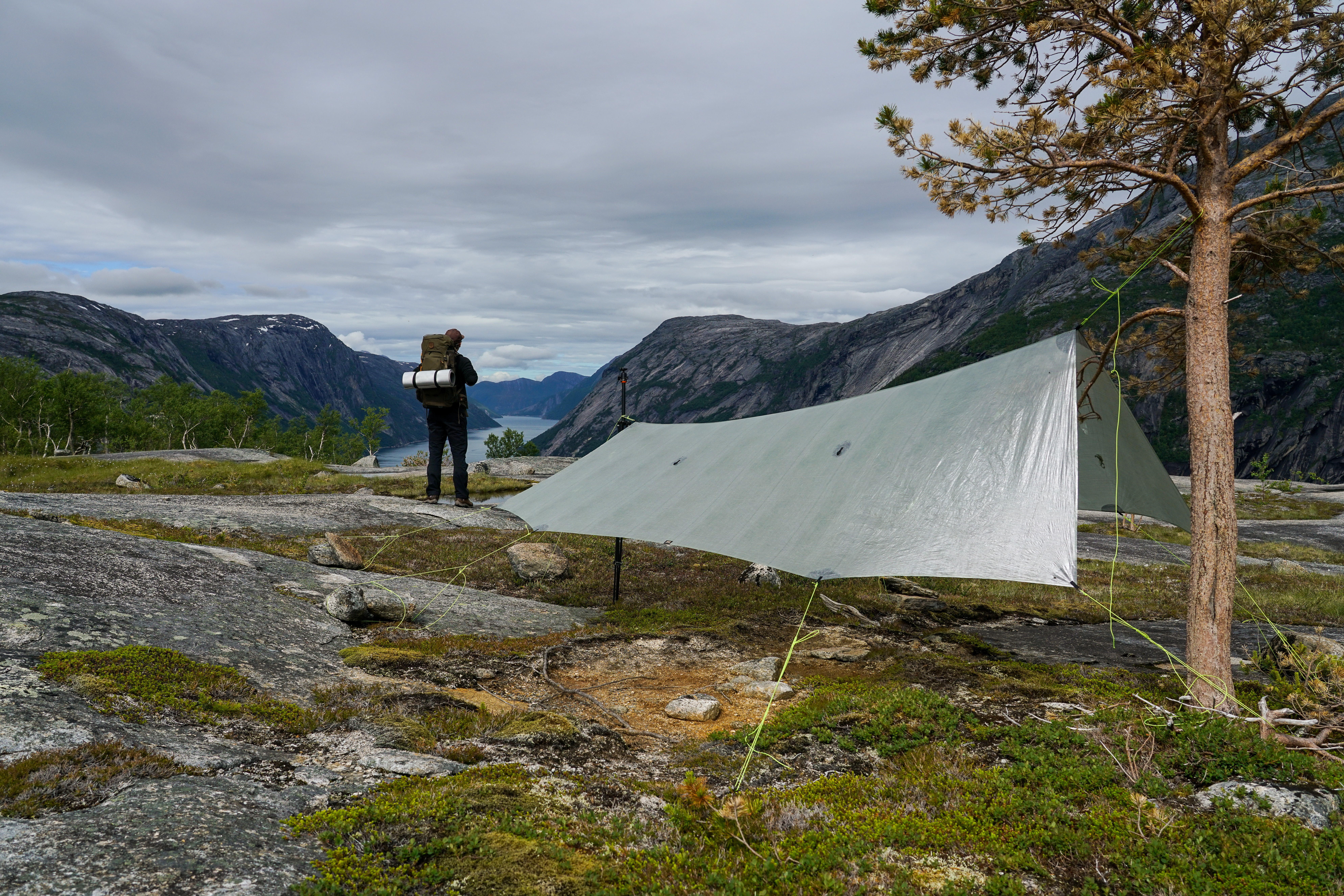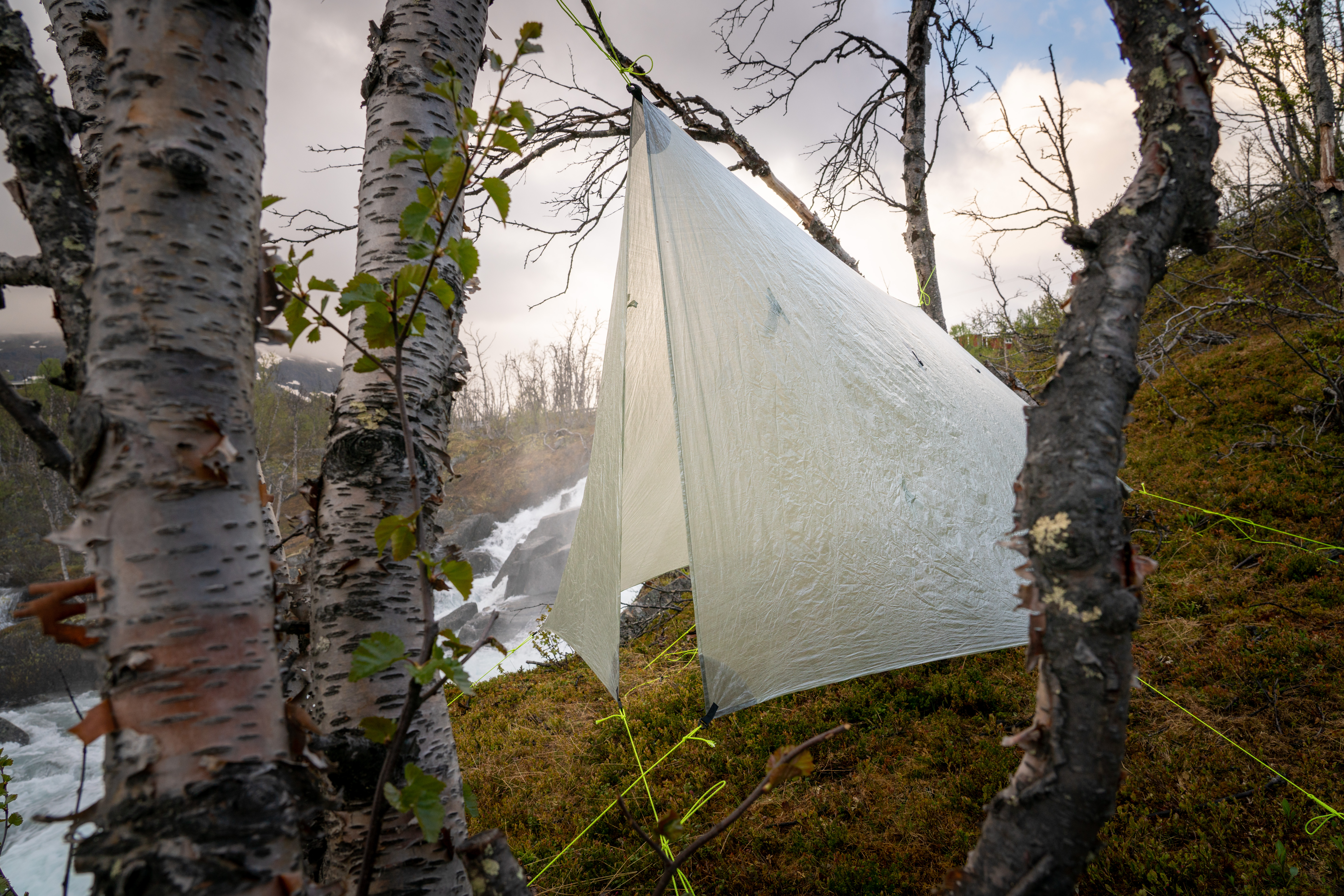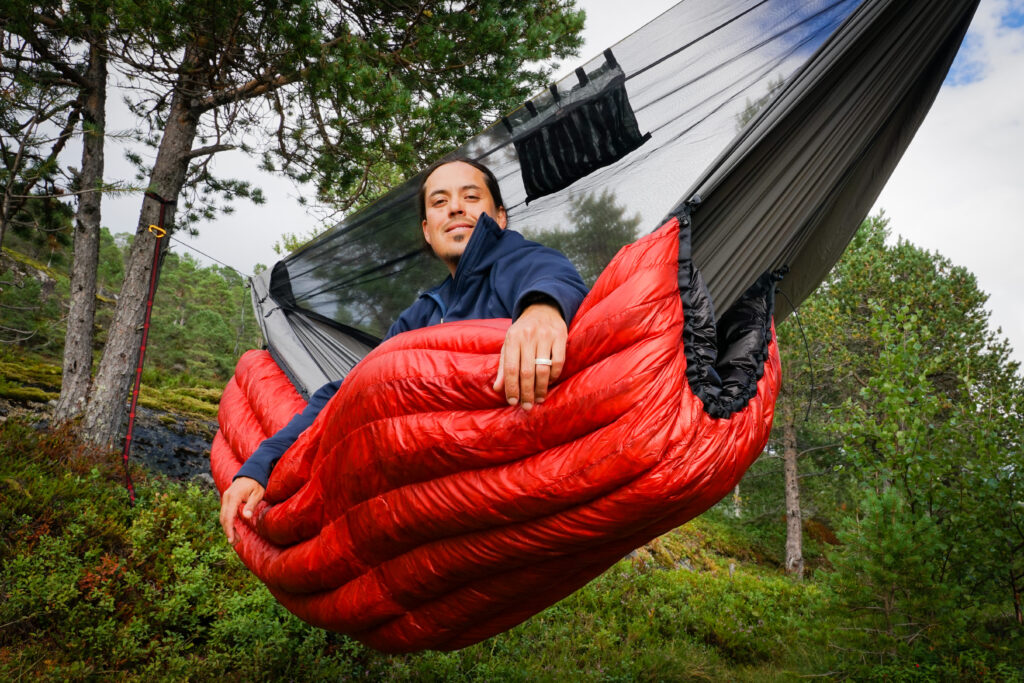10 Reasons Why You Should Try A Backpacking Tarp


When it comes to ultralight hiking, no other gear has the potential to reduce your kit’s weight as much as a backpacking tarp shelter. These sturdy, minimalist, versatile shelters are an excellent piece for every backpacker to have in their quiver. No matter if you’re looking to carry less weight, move faster, sleep in a hammock, or simply add a 9 oz roof to your campsite’s kitchen, a backpacking tarp shelter has something to offer everyone.
But first, what exactly is a backpacking tarp? In short, it’s a single sheet of extremely lightweight, durable, waterproof fabric with tie out points along the perimeter. A tarp is set up using tensioned guy lines, tied out to a combination of trekking poles, stakes, trees, rocks and other found objects to suspend the shelter above its users and protect them from the elements. No, this isn’t your dad’s old camp tarp. The best backpacking tarp shelters of today are constructed with ultra high tech Dyneema fabrics to increase durability, maximize tension strength, decrease weight, and eliminate sagging.
Elegantly simple, yet extremely effective, here are 10 reasons you should try out a backpacking tarp.
- Tarps are the lightest possible shelter. It comes as no surprise that basic tarps weigh less than every other form of shelter, bar none. But to put it into perspective, Hammock Gear’s Square Dyneema Fiber Flat Tarp weighs only 9 oz with guy lines. That’s about 85% less weight than a typical tent, 75% less weight than an ultralight shelter, and 50% less weight than a pyramid shelter. So if you want to carry the least possible amount of weight, look no further.
- Tarps are sturdier and more protective than you think. Contrary to most assumptions, a taught, well-pitched tarp will indeed protect campers from the elements. In fact, when set up in low-to-the-ground, storm-worthy configurations, tarps actually stand up better to wind gusts than tents do. However there’s no avoiding the fact that “the front door is always open” so to speak due to tarps inherent openness. So in storm scenarios, be sure to remedy this by situating the tarp such that trees, plants, or at least your backpacks partially wall off the entrance.
- Tarps are affordable. There’s no denying that ultralight shelters are tough on the wallet. Dyneema products, in particular, are notoriously costly. But thanks to their simplicity, tarps are still highly affordable. Hammock Gear, for instance, offers hammock tarps made of Sil Poly for only $100 and hammock or ground Dyneema tarps for only $300. Far heavier “ultralight” tents made of silicone impregnated fabrics are typically in the $250-500 range, and Dyneema shelters usually cost $500+. If you’ve come to internalize the fact that lighter gear is more expensive, think again. It’s pretty incredible that the lightest possible shelters are actually the most affordable.
- Tarps can be modified to protect you from critters. It’s not unreasonable to think that bugs or rodents could get to you in your tarp. However, modular accessories, like mesh bug walls or soft shell bivy sacks (which also protect against draftiness) are available to protect the user against critters. And keep in mind that no shelter is perfect in every single condition; tarps are just one arrow in a backpacker’s quiver. Save weight and pack the tarp when bug pressure is low, use alternative options when it’s high.
- Tarps can have floors. Pick up an inexpensive ground sheet and you’ll be protected against wet earth and pokey blades of grass. They only add a few ounces, but provide a lot of extra comfort and livability, especially if you’re expecting to camp on wet earth.
- Tarps don’t require knot skills, but can help you learn them. For maximum versatility and effectiveness, it’s a good idea to master the trucker’s hitch and bowline. These very simple knots will allow you to suspend the tarp on roots, tree, rocks, and other natural objects. However, most people will still use stakes most of the time, and that means you can skip knots entirely and tension it all out using LineLocs, just like a tent’s vestibule.
- Tarps can modify your tent or campsite. If you plan to spend some serious backcountry time in the rain, you may want to bring a tarp in addition to your other shelter. A tarp can be set up over your camp kitchen to keep the crew dry at mealtimes, and it can also be suspended over the front of your tent to make a gigantic dry porch. Either way, you’re guaranteed to impress your friends.
- Tarps are highly customizable. There are many ways to set up a tarp. In good weather, campers can use A-Frame mode to maximize space and livability. In stormy weather, tarps can be pitched lower to the ground and with only one end open to increase wind resistance and decrease the likelihood of rain blowing or splashing in.
- Tarps offer excellent ventilation and front door views. Because of their inherent openness, tarps never get stuffy, stinky, or overheated, which makes them an excellent option for summer weather. And that same mechanism also makes them excellent for camping at scenic viewpoints. Just point the front door wherever is prettiest and voila! Enjoy the view from the comfort of your bed.
- Tarps are great for solo use. While most tarps typically fit two campers, they’re even better for just one! In A-frame mode, the most common configuration, a single camper can sleep directly underneath the ridgeline for maximum headroom, whereas two campers will need to share that space whenever tasks require simultaneous kneeling. But even more importantly, because a soloist can’t share gear, they’ll always be carrying a full kit. To reduce the weight impacts of not getting to share, it makes sense to seek out the lightest possible shelter.
So if you want to save the most possible weight for the least possible amount of money, you’ve come to the right place. Add a backpacking tarp shelter to your quiver and you’ll learn to appreciate their elegant simplicity and astounding backcountry effectiveness. Happy hiking!
Related Posts
The Best Camping Hammocks of 2024 – A Buyer’s Guide by Hammock Gear
A good camping hammock can completely transform how you experience…
Can Napping Hurt You? Unveiling the Pros & Cons of Daily Zzz’s
Napping, the act of taking a brief sleep during the…


